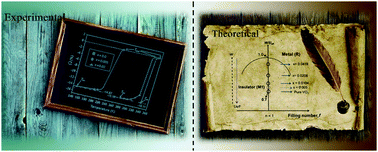当前位置:
X-MOL 学术
›
Phys. Chem. Chem. Phys.
›
论文详情
Our official English website, www.x-mol.net, welcomes your feedback! (Note: you will need to create a separate account there.)
Characterisation of the temperature-dependent M1 to R phase transition in W-doped VO2 nanorod aggregates by Rietveld refinement and theoretical modelling
Physical Chemistry Chemical Physics ( IF 3.3 ) Pub Date : 2020/03/26 , DOI: 10.1039/d0cp01058h Lei Miao 1, 2, 3, 4, 5 , Ying Peng 1, 2, 3, 4, 5 , Dianhui Wang 1, 2, 3, 4, 5 , Jihui Liang 1, 2, 3, 4, 5 , Chaohao Hu 1, 2, 3, 4, 5 , Eiji Nishibori 6, 7, 8, 9, 10 , Lixian Sun 1, 2, 3, 4, 5 , Craig A. J. Fisher 11, 12, 13 , Sakae Tanemura 1, 2, 3, 4, 5
Physical Chemistry Chemical Physics ( IF 3.3 ) Pub Date : 2020/03/26 , DOI: 10.1039/d0cp01058h Lei Miao 1, 2, 3, 4, 5 , Ying Peng 1, 2, 3, 4, 5 , Dianhui Wang 1, 2, 3, 4, 5 , Jihui Liang 1, 2, 3, 4, 5 , Chaohao Hu 1, 2, 3, 4, 5 , Eiji Nishibori 6, 7, 8, 9, 10 , Lixian Sun 1, 2, 3, 4, 5 , Craig A. J. Fisher 11, 12, 13 , Sakae Tanemura 1, 2, 3, 4, 5
Affiliation

|
Understanding the mechanism of the insulator–metal transition (IMT) in VO2 is a necessary step in optimising this material's properties for a range of functional applications. Here, Rietveld refinement of synchrotron X-ray powder diffraction patterns is performed on thermochromic V1−xWxO2 (0.0 ≤ x ≤ 0.02) nanorod aggregates over the temperature range 100 ≤ T ≤ 400 K to examine the effect of doping on the structure and properties of the insulating monoclinic (M1) phase and metallic rutile (R) phase. Precise measurement of the lattice constants of the M1 and R phases enabled the onset (Ton) and endset (Tend) temperatures of the IMT to be determined accurately for different dopant levels. First-principles calculations reveal that the observed decrease in both Ton and Tend with increasing W content is a result of Peierls type V–O–V dimers being replaced by linear W–O–V dimers with a narrowing of the band gap. The results are interpreted in terms of the bandwidth-controlled Mott–Hubbard IMT model, providing a more detailed understanding of the underlying physical mechanisms driving the IMT as well as a guide to optimising properties of VO2-based materials for specific applications.
中文翻译:

用Rietveld精炼和理论模型表征W掺杂的VO2纳米棒聚集体中与温度有关的M1至R相变
了解VO 2中绝缘体-金属过渡(IMT)的机理是在一系列功能应用中优化该材料性能的必要步骤。在此,被热致变色V执行的同步辐射X射线粉末衍射图案的Rietveld精化1- X w ^ X Ô 2(0.0≤ X ≤0.02)纳米棒的聚集体的温度范围内100≤ Ť ≤400 K至审查关于掺杂的效果绝缘单斜(M 1)相和金红石(R)相的结构和性能。精确测量M 1和R相的晶格常数可实现起始(T on)和IMT的端温度(T end),可以针对不同的掺杂水平精确确定。第一性原理计算表明,观察到的T on和T end随W含量的增加而降低是Peierls型V–O–V二聚体被带隙变窄的线性W–O–V二聚体所代替。根据带宽控制的Mott–Hubbard IMT模型来解释结果,从而提供了对驱动IMT的基本物理机制的更详细了解,并为针对特定应用优化基于VO 2的材料的性能提供了指南。
更新日期:2020-04-15
中文翻译:

用Rietveld精炼和理论模型表征W掺杂的VO2纳米棒聚集体中与温度有关的M1至R相变
了解VO 2中绝缘体-金属过渡(IMT)的机理是在一系列功能应用中优化该材料性能的必要步骤。在此,被热致变色V执行的同步辐射X射线粉末衍射图案的Rietveld精化1- X w ^ X Ô 2(0.0≤ X ≤0.02)纳米棒的聚集体的温度范围内100≤ Ť ≤400 K至审查关于掺杂的效果绝缘单斜(M 1)相和金红石(R)相的结构和性能。精确测量M 1和R相的晶格常数可实现起始(T on)和IMT的端温度(T end),可以针对不同的掺杂水平精确确定。第一性原理计算表明,观察到的T on和T end随W含量的增加而降低是Peierls型V–O–V二聚体被带隙变窄的线性W–O–V二聚体所代替。根据带宽控制的Mott–Hubbard IMT模型来解释结果,从而提供了对驱动IMT的基本物理机制的更详细了解,并为针对特定应用优化基于VO 2的材料的性能提供了指南。


























 京公网安备 11010802027423号
京公网安备 11010802027423号